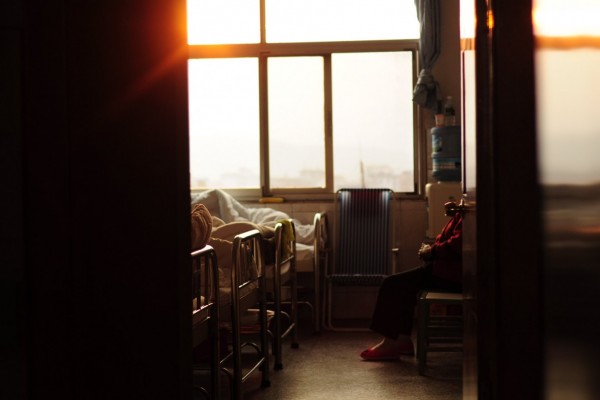Filipino healthcare workers are bearing the brunt of the COVID-19 pandemic

Myn Bee Farnazo, a Medical Technologist at the Provincial Hospital of South Cotabato, is assisted in correctly wearing her PPE before entering an isolation room. Photo by Louie Pacardo/UN Women.
Over the last few months, we have witnessed a marked shift in efforts to report on the impact of COVID-19 on Filipino health workers in the United States and the United Kingdom. But in Canada, conversations about the disproportionate effects of the pandemic on racialized groups including the Filipino community have been notably absent.
Canada’s response illustrates the yawning gap between this country’s reliance on migrant workers for essential services, and the inadequate protections and rights it provides for those same groups. This leaves apparently essential healthcare workers vulnerable to abuse.
According to the WHO, the world needs nine million more nurses to achieve the sustainable development goal of universal health coverage by 2030.
Around 13,000 Philippine healthcare workers go abroad annually, aggravating a domestic healthcare labour shortage, according to the Philippine Overseas and Employment Administration, the government agency which facilitates the deployment of workers.
On April 2, the Philippine government issued an order to stop healthcare workers from going abroad. The temporary deployment ban was put in place with the intention of retaining, rather than exporting, healthcare workers in their home country to help in the struggle to fight COVID-19.
Yet, Canada needs more nurses for a robust pandemic response. Concerns for the number of available healthcare workers come as the novel coronavirus has gained a foothold in so many long-term care homes plagued with staffing shortages that existed even before the pandemic. In addition to its outsize elder population, Canada’s overburdened labour force has struggled to meet their needs, exacerbated by the lack of personal protective equipment. As a result, the Philippines has become the biggest source of healthcare workers. Over 30 percent of internationally educated nurses and 85 percent of live-in caregivers in Canada are from the Philippines.
A brief history of the Filipino nursing diaspora
Due to nursing labour shortages in the 1970s, Ottawa began heavily importing nurses as Manila simultaneously implemented a labour export policy. Central to that strategy was a systematic, state-sponsored network for sending poor people abroad, designed to foster economic development through remittances from overseas workers. The number of nursing training schools in the Philippines increased rapidly, feeding young people into this education system to satisfy the export policy. A significant proportion of educated nurses from these schools would then be deskilled to work as caregivers or domestic workers in their destination countries.
This wave of healthcare labour migration from the Philippines abruptly stalled in the 1990s, however, as temporary visas issued to foreign nurses disappeared with Canada’s move to retrenchment and neoliberal restructuring of the health system. Nurses instead were de-skilled and arrived in Canada through the Live-in Caregiver Program, a successor to the Foreign Domestic Worker Program.
These nurses experience systemic barriers to workforce integration and struggle to regain their professional identity. In 2010, reforms were introduced through the Juana Tejada Law. Through workers organizing, the live-in requirement was removed in 2015.
Nevertheless, the new Caregiver Program severely constrained the ability of domestic workers to acquire landed immigration status. Canada continues to extract labour without providing protections for these workers. The 2016 census found the Philippines to be the top source of immigrants to Canada.
Transnational capitalism continued to prosper on the backs of this essential, but undervalued workforce. Their material conditions made life difficult for newcomers while the remittances of overseas workers grew tremendously to keep the economy of the Philippines afloat.
Many of the first to die of COVID-19 in Canada were Filipina/x healthcare workers. Victoria Salvan, 64, became the first patient attendant to die in Québec. Christine Mandegarian, 54, was a long-term care facility worker who was the second healthcare worker to die from the coronavirus in Ontario. They were part of waves of tens of thousands of healthcare workers, mostly women, who immigrated to Canada from the Philippines in the late 1970s and early 1980s.
Today, Filipino healthcare workers continue to be marginalized and deemed disposable. Warlito Valdez, 47, died of COVID-19 while in self-isolation. Despite being in contact with the Richmond health authorities as a care home worker himself, he still contracted the disease on the job. Ronald Villacorza David, 58, worked at a Brampton hospital as a sanitation worker where he also caught the illness and later perished. Precarious jobs taken up by Filipino immigrants are now “essential” or “key” services, but still lack security and are today less than safe.
In fact, during the pandemic immigrants have reported higher levels of concern about their health and financial security than the rest of the population, according to a recent Statistics Canada survey. While federal data has been updated to reflect confirmed cases reported by provincial and territorial health authorities since early this year, and Filipino workers continue to die, the government is still not tracking race-based COVID-19 data. If this data was tracked, the government might find the legacy of structural racism and exploitation that Canada is built upon. This is to say nothing of the other factors contributing to health inequities such as income levels, working conditions, access to food, and housing, or even credential assessment.
In Québec, care workers are left in limbo as the contentious Bill 9 was passed in the National Assembly in 2019. The bill impacts immigration in the province by revoking 18,000 applications, many of which are for highly-skilled foreign nationals. As English is the official language of the Philippines, many Filipino workers are proficient, but would likely not have the high level of French required to land in Québec. Many Filipino healthcare workers who fill in as frontline staff in Québec, which currently leads Canada in coronavirus cases, would move to other provinces.
What’s more, 82 percent of COVID-19 deaths in Québec can be found in understaffed or abandoned long-term care homes. Even before the pandemic hit, the province struggled to recruit nurses and workers to staff their care homes. Through some twisted irony, Bill 9 may have contributed to more deaths in Québec than elsewhere in Canada because Filipino healthcare workers were expelled before they could be exploited.
This pandemic has exposed Canada’s weaknesses and failings—in particular, how it has failed to care for the oldest and most vulnerable among us. Beyond flattening the curve, provincial policies must drastically change towards eliminating the disparities in Canada’s current publicly funded, privately delivered system that provides dysfunctional, two-tiered health care. Hospitals, long-term care facilities, and nursing homes must be protected from further erosion and privatization. Healthcare workers must be protected from falling through cracks of government neglect, labour coercion and abuse. Worker-led aid networks and organizing must be prioritized to combat a crisis and to secure socioeconomic justice.
It is time to imagine how we might do things differently under a socialized and de-commodified healthcare system for all, based on peoples’ need and not for profit.
Ysh Cabana is a writer and community organizer living in Toronto. He is also a member of BAYAN-Canada, alliance of progressive Filipino groups.










